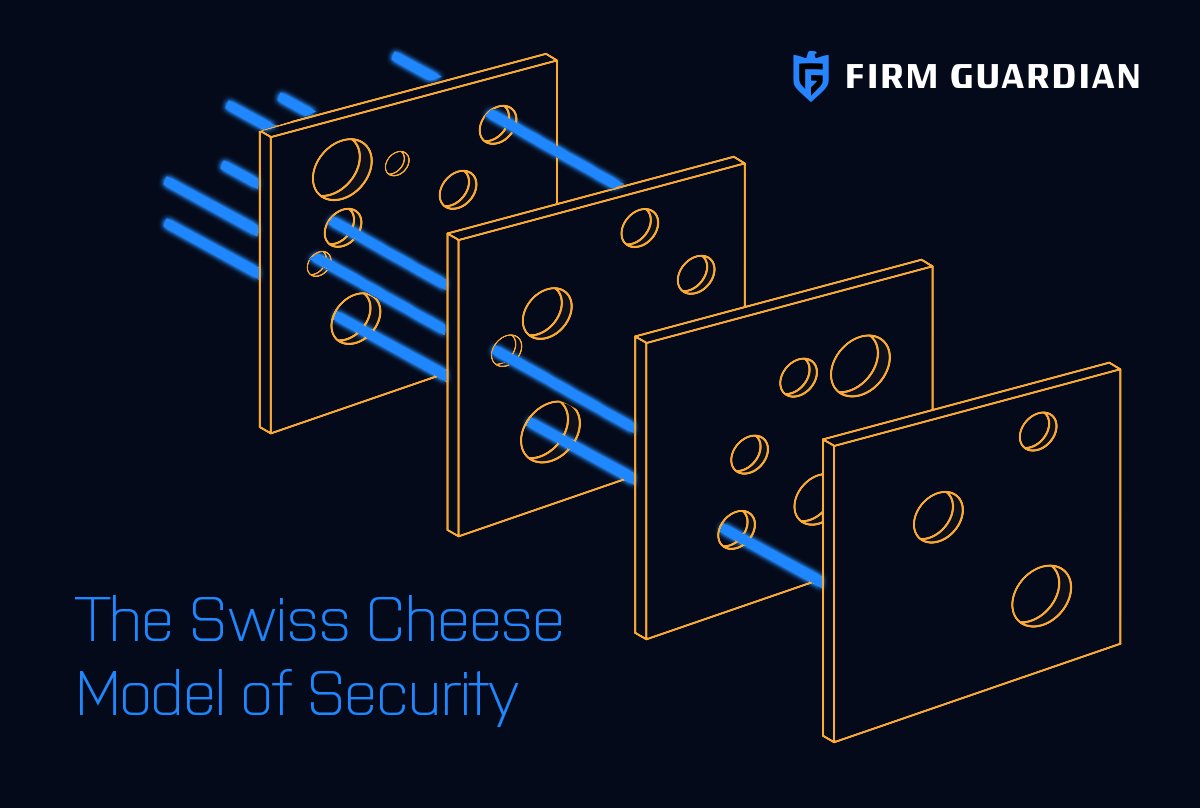Understanding the Swiss Cheese Model of Cybersecurity
In an age where cyber threats loom larger and grow more sophisticated every day, the adage "better safe than sorry" has never rung more true. For a robust cybersecurity strategy, it is crucial to move beyond single, static defense mechanisms. Instead, professionals must adopt an approach that mirrors a natural phenomena—the Swiss Cheese Model. By layering defense strategies, businesses and individuals can minimize the risk of breaches and ensure a more resilient defense posture.
The Swiss Cheese Model Explained
Originally conceptualized in the context of aviation safety, the Swiss Cheese Model is a visualization technique that demonstrates how multiple, overlapping layers of defense can significantly improve risk mitigation. At its core, it suggests that even though each layer (or slice of 'cheese') might contain holes (representing vulnerabilities), a system is safeguarded as long as these holes do not align vertically, allowing an incident to pass through all layers undeterred. In cybersecurity, these layers encompass a variety of technical, procedural, and human controls designed to protect digital assets.
Cyber Threats and Vulnerabilities
Every system, no matter how robustly designed, inherently harbors vulnerabilities. Cybersecurity practitioners often liken these to the holes in a slice of Swiss cheese: they're inevitable and, to some degree, acceptable as part of the system's functionality. However, when these vulnerabilities align with the capabilities of threats—such as malware, phishing, or exploitation tools—they can lead to significant security incidents.
The challenge is to ensure that there are enough 'cheese' slices so that the holes of any given slice are covered by the other slices, minimizing the possibility of threat-vulnerability alignment across the entire environment.
The Importance of Overlapping Defenses
A robust cybersecurity posture is not simply about implementing defenses against every imaginable attack. It's about building a mosaic of security layers that, when combined, serve as a formidable deterrent and as mitigation strategies in case any individual layer is compromised. This approach is not only practical but also mirrors the real-world tactics of an attacker-versus-defender scenario.
Overlapping defenses in the form of intrusion detection systems, firewalls, regular software and system updates, access controls, and user training ensure that, even if a cybercriminal manages to breach one layer, further obstacles await. Each 'cheese' slice contributes to a holistic, dynamic defense that is more resilient against both internal and external threats.
The Swiss Cheese Model of cybersecurity accounts for cyber threat dynamism by providing an adaptive defense strategy.
Why Multiple Layers of Security Matter
Resilience Against Evolving Threats
Cyber threats are ever-evolving, with attackers constantly developing new methods and tools. The Swiss Cheese Model of cybersecurity accounts for this dynamism by providing an adaptive defense strategy. As new vulnerabilities are discovered and new threats emerge, layers can be adjusted and augmented without overhauling the entire security infrastructure.
Reducing Single Points of Failure
In the absence of layered defenses, systems are reliant on single points of failure. When a single safeguard is compromised, the entire system becomes vulnerable. The Swiss Cheese Model effectively reduces these single points of failure by distributing risk across multiple controls, meaning that the compromise of a single defense is far less catastrophic.
Mitigating Human Errors
Humans are, by definition, the most unpredictable factor in any system. Mistakes, whether through negligence or lack of understanding, can create vulnerabilities that attackers exploit. Multiple layers of defense mitigate this risk; for instance, a user accidentally clicking on a phishing email may breach one layer, but robust access control systems and EDR software may prevent further damage.
Implementing the Swiss Cheese Model
Developing and implementing a robust security strategy based on the Swiss Cheese Model involves careful planning and conscientious execution. This section details how to put this model into practice within your organization.
Identifying and Assessing Vulnerabilities
A crucial first step is to conduct a comprehensive assessment of your systems and infrastructure to identify potential weaknesses. This process requires a combination of vulnerability scanning tools, penetration testing, and regular audits. The goal is to understand your 'cheese' slices, recognize where the holes are, and evaluate the likelihood of threat-vulnerability alignment.
Layering Security Controls
Once vulnerabilities are known, it's time to implement a balanced combination of technical controls (e.g., firewalls, antivirus software), administrative controls (e.g., policies and procedures), and physical controls (e.g., biometrics, secure access points). These layers should be selected and located strategically to provide maximum coverage and to impede attackers should they pierce the initial defenses.
Continual Monitoring and Updates
Cybersecurity is not a one-and-done effort. To maintain the integrity of the Swiss Cheese Model, organizations must commit to continuous monitoring and a proactive stance on updating and evolving their security measures. This includes staying current with the latest threats, regularly updating systems and applications, and conducting ongoing employee training. Furthermore, systems must be regularly tested to verify the effectiveness of the layered controls.
Conclusion: Committing to Multi-Layered Security
The Swiss Cheese Model offers a practical framework for understanding and addressing the complexities of cybersecurity. By acknowledging the inevitability of vulnerabilities and the persistent risk of threats, businesses can better prepare themselves to face the digital unknown.
Integrating the Swiss Cheese Model into your cybersecurity strategy embodies the pragmatic approach businesses need in the ever-changing online landscape. With diverse layers of defense, you can navigate challenges with resilience, adaptability, and a clear commitment to shoring up the security of your most critical assets. Whether you're a seasoned cybersecurity professional or a small business owner taking the first steps to safeguard your digital presence, embracing this multilayered security mindset is crucial in protecting against the next cyber onslaught.


